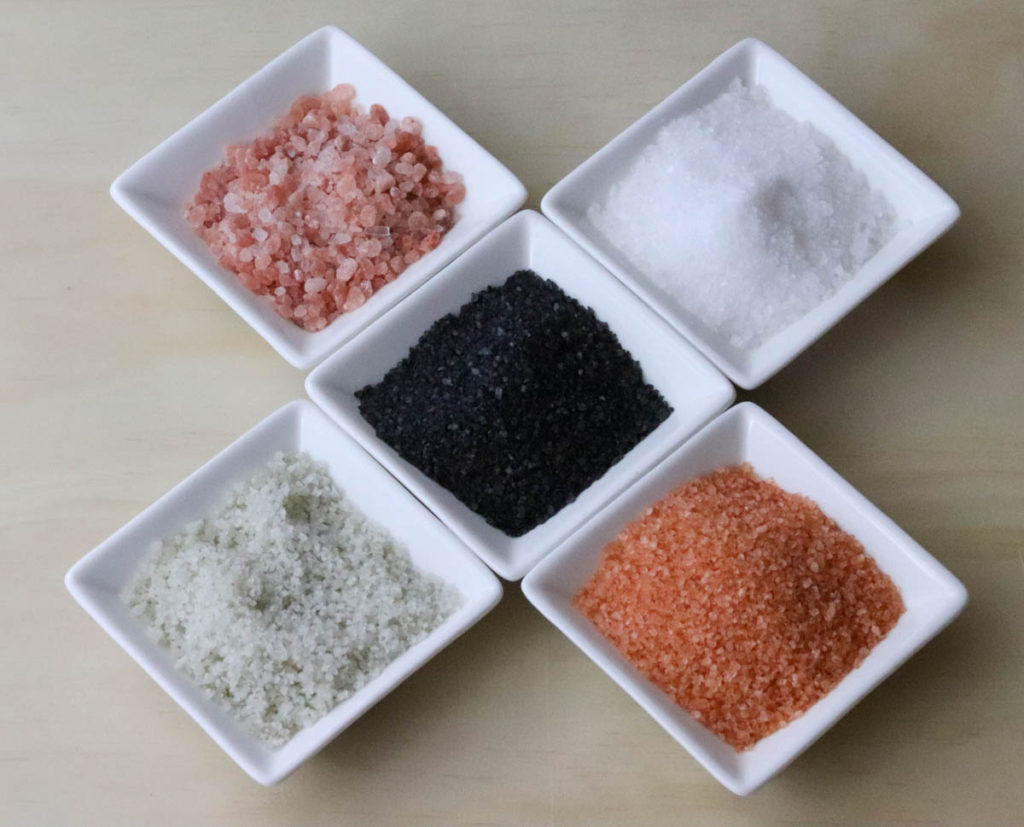One day a dear friend of mine was waiting for her delayed flight when, as it often happens in these situations, she started to chat with another passenger.
Noticing his accent, my friend – a gourmand who owns a beautiful restaurant in Napa – asked if he was from “down under”.
The man was indeed Australian and when he said that he came from “the Murray River area” my friend exclaimed, “I know precisely where it is!
“I betcha you do, mate!” the Aussie replied, giving her a skeptical look.
“No, I really do! It’s where my favorite salt comes from!”
“Oh, yeah, we had all that salt we wanted to get rid of, but nobody wanted to buy it. So one day we decided to market it at a ridiculously high price and now it sells like hotcakes!”
Of course my friends thought that the Australian was joking but, thinking of another story that my mother told me many years ago, his marketing strategy made sense to me.
After the end of World War II my maternal grandfather – who owned a small farm near Padua, Italy – wanted to get rid of a big pile of manure that he had no use for. After having unsuccessfully tried to sell it for a while, he had to resign himself to give it away for free. Still nobody wanted it. He even volunteered to cart it to anyone who could use it, but again nobody seemed interested.
The summer was approaching and he needed to do something about the stinking pile.
He had noticed that – after the arrival of the American Army in Italy – anything that came in a box or in a can had become extremely popular, regardless of the quality of the product. So my grandfather made a deal with a local cannery: if they agreed to put his manure in cans, he would split the revenues fifty-fifty with them.
What did the trick was his marketing strategy. He labeled the cans “Ematel – The new American super-fertilizer. Wonderful for your roses and your geraniums” and asked a garden supply store – catering to the downtown ladies – to sell a sample lot of cans. The first batch sold out so quickly that the canning company couldn’t keep up with the demand. What the buyers never realized was that Ematel is the Italian word for manure (letame) spelled backwards.
Please forgive me for putting salt and manure in the same story, a little disrespectful towards such a precious commodity as salt has always been throughout human history.
Because of its use in preserving food when refrigeration was not available, many wars have been fought for the control of salt mines and salt routes; salt has been used as currency and often traded ounce for ounce for gold and, until a few decades ago, it was such a major source of tax revenues for many countries that the people caught using seawater for cooking were fined or imprisoned.
Then, thanks to better extraction techniques and cheaper transportation, salt has slowly become less and less expensive, and more widely available.
Recently new types of salt have made their appearance on the culinary scene and salt has became, once again, expensive. For being just salt, I mean.
I must admit that in the beginning I was a little skeptical about spending so much money in sodium chloride just because it came from a far corner of the planet. After all, sodium chloride is sodium chloride, no matter how big or small or colorful its grains are.
However, after doing some research and trying different kinds of salt, I must admit that my “salt is salt” belief was wrong.
To my defense, I have to say that I grew up in a place and in a time when salt was a State monopoly, sold only at tobacconists (yes, you read right), was strictly white and came in two forms only: coarse (used to preserve food and to salt the water for cooking pasta) and fine (for all the other cooking purposes).
Having grown up in Italy, I have seen many salt-works and the salt making process seemed so straightforward that I trusted the product to be pure: let the sea water evaporate, harvest, clean impurities, package and sell.
However, during my research I found out that salt is no longer what it used to be (or I believed it was). Most table salts go through a process that removes beneficial minerals and adds anti caking agents and preservatives.
Couldn’t we just keep adding some grains of rice to the shaker so that the salt didn’t cake? Did I really want to keep cooking with such processed salts?
So I decided to experiment with the new ones available on the market but, with so much choice, first I needed understand more about them.
Salt falls into three categories:
Sea Salt made from the evaporation of seawater and available in fine grains or larger crystals.
Rock salt a mineral derived from sodium chloride, it’s found in underground deposits.
Kosher salt it comes from either seawater or underground salt mines, but it doesn’t contain any preservatives. It takes its name from its use in the koshering process.
All three of them serve their purposes: enhancing the taste of food, pickling, preserving, braining, adding iodine to our diet, frosting our margarita glasses and, unfortunately, raising our blood pressure.
Then there is a great variety of gourmet salts that do exactly the same things plus adding very subtle but distinct flavors to our recipes. They come in an array of pale nuances that range from black to grey, to pink, to taupe, to snowy white, and in a variety of textures that go from superfine to coarse to slabs on which you can cook.
Unlike your ordinary table salts, though, they don’t simply exalt flavors: they add texture, surprise, even sexiness to your food. What a delight to find that unexpected little grain that melts on your tongue, tingling not only your taste but also other senses, suddenly reminding you of that wonderful vacation on the beach! And what to say of the tanginess that those tiny Himalayan gems put in all your salads? And the smokiness you can add to your fish and meats with just a few flakes of Murray salt?
As you might have guessed, it took a grain of it to admit and overcome my prejudices, but then I fell in love with salt!
Here are some of your delightful choices. Try some of them until you find your favorites. They might seem pricey but they last a long time and you only need to use them sparingly. Get in the habit of alternating them since each one contains different minerals that are very beneficial.
Himalayan Pink: rock salt from India and Pakistan.
Bolivian rose: rock salt from the Bolivian Andes
Gris de Guerande: grey sea salt from Brittany, France.
Murray River: rock salt from North West Victoria, Australia
Maldon: sea salt flakes from England. It comes also in a smoked variety
Kala Namak: also called Black Salt, it’s actually a purplish-grey rock salt from India.
Trapani white: sea salt from the Mediterranean coast of Sicily
Cervia Sweet Salt: sea salt from the Adriatic coast of Italy
Alea Sea Salt: sea salt from Hawai’i
Black Lava: sea salt from Hawai’i

